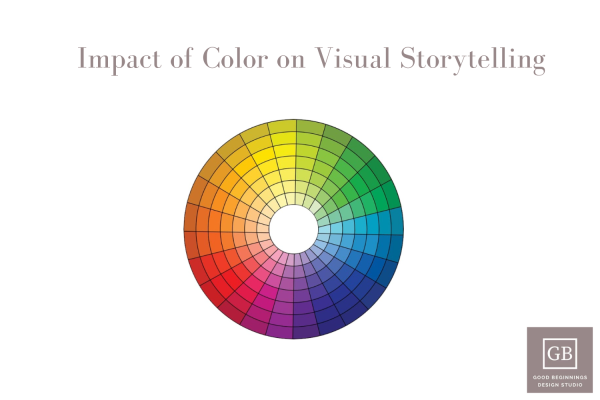The art of storytelling extends beyond words and plotlines; it encompasses a visual journey that captivates the audience. One of the most influential elements in this visual odyssey is color. This blog delves into the diverse techniques of chromatic storytelling, exploring the symbolism, psychology, and emotional resonance of colors in narratives. From the palette’s impact on brand storytelling to vibrant hues influencing audience perceptions, we unravel the intricacies of visual storytelling chromatics
Exploring the Influence of Color in Visual Storytelling
Color Symbolism in Narratives:
Colors serve as silent narrators, conveying nuanced meanings and adding layers to a story. Whether it’s the protagonist’s clothing or the backdrop of a pivotal scene, the intentional use of color symbolism enhances the narrative. For instance, red may signify passion or danger, while blue may represent calmness or melancholy. Understanding and leveraging these symbolic meanings can deepen the impact of storytelling.
Collaborative Color Storytelling:
Within Good Beginnings Design Studio, the collaborative effort to tell a story visually is enhanced by the shared understanding of color’s impact. The color palette becomes a shared language, allowing different departments to contribute cohesively to the storytelling process. Photographers discuss lighting and set design, explore color grading, and create promotional materials, all working in harmony to amplify the narrative’s visual impact.
Narrative Color Psychology:
The intersection of color and psychology is a realm where narratives become profound and relatable. Different hues evoke specific emotions, influencing how audiences perceive characters and plot developments. Exploring the color psychology in visual merchandising allows creators to tap into the subconscious, shaping audience reactions and engagement.
Color Palette in Visual Storytelling:
A carefully curated color palette is akin to a storyteller’s brushstroke on a canvas. The selection of colors sets the tone, atmosphere, and mood of the narrative. Whether it’s a monochromatic scheme for a minimalist feel or a contrasting palette for heightened drama, the color palette is a powerful element that defines the visual language of storytelling.
Branding with Storytelling Colors:
Beyond narratives, colors play a pivotal role in brand storytelling. Consistent use of specific colors becomes synonymous with brand identity. The color palette strategy becomes a visual signature that communicates brand values, and personality and evokes specific consumer emotions. This strategic use of colors strengthens brand recall and loyalty.
Colorful Storytelling Strategies:
Storytelling with vibrant hues goes beyond mere aesthetics; it becomes a strategic choice to convey energy, vitality, and positivity. Vibrant colors can inject life into a narrative, making it visually dynamic and engaging. Whether it’s a lively character, a vivid setting, or a vibrant plot twist, storytelling with vibrant hues adds a layer of excitement to the overall experience.
Color Scheme Influence:
The influence of color schemes extends to every facet of visual storytelling. From cinematography in films to illustrations in books, the chosen color scheme sets the visual rhythm. Analogous, complementary, or triadic color schemes each bring a unique flavor to the narrative, influencing how the audience perceives the story’s flow and coherence.
Read here: Power of visual storytelling
Storytelling Through Color Grading:
In the era of digital photography, color grading has become a powerful tool for photographers to enhance storytelling. The post-processing stage allows photographers to manipulate color tones, emphasizing certain hues or creating specific atmospheres. The careful application of color grading contributes to the overall narrative aesthetic, guiding the viewer’s interpretation of the image.
Conclusion:
Visual storytelling chromatics is a dynamic and intricate tapestry where colors are not mere embellishments but integral components of the narrative. From the symbolic weight of color choices to the emotional impact they carry, storytellers wield the palette with intention and finesse. As we navigate the vibrant landscape of colorful storytelling, we discover that colors transcend the visual spectrum, becoming a universal language that speaks to the heart of every viewer.

